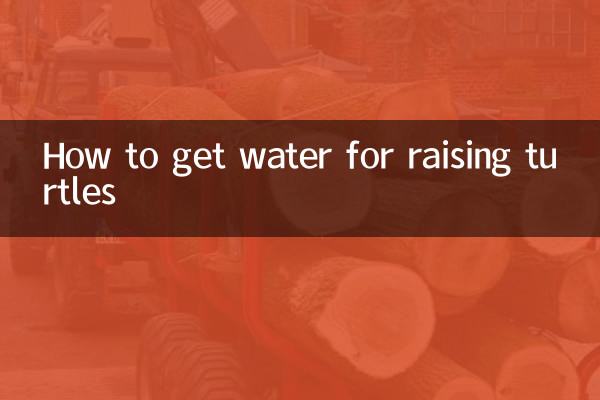How to get water for raising turtles
Keeping turtles is an option for many hobbyists, but water quality management is key. Turtle health is closely related to water quality, so it's important to know how to properly prepare and maintain the water in which you keep your turtles. This article will introduce in detail how to prepare the water for raising turtles, including water quality requirements, water change frequency, filtration system, etc.
1. Water quality requirements

The water quality for raising turtles needs to meet the following basic conditions:
| parameters | ideal range | Remarks |
|---|---|---|
| water temperature | 22-28°C | There may be slight differences between varieties |
| pH value | 6.5-8.0 | Neutral to weakly alkaline is appropriate |
| Ammonia content | 0mg/L | Ammonia is harmful to turtles |
| nitrite | 0mg/L | Toxic in high concentrations |
| Nitrate | <40 mg/L | High concentrations require water changes |
2. Source and treatment of water
The water for raising turtles can come from the following sources:
| Water source type | Treatment method | Things to note |
|---|---|---|
| tap water | Dry for 24 hours or use chlorine remover | Chlorine is harmful to turtles |
| mineral water | Use directly | higher cost |
| filtered water | Check mineral content | Avoid over-filtering |
3. Water change frequency and method
Changing water is an important step in keeping water clean. The following is the recommended frequency of water changes:
| turtle size | Water change frequency | Water change amount |
|---|---|---|
| hatchling | every day or every other day | 20-30% |
| adult turtle | 1-2 times a week | 30-50% |
Pay attention to the following when changing water:
1. Use water with a similar temperature to avoid excessive temperature differences.
2. Clean the feces and residual bait at the bottom of the tank.
3. Avoid frequent water changes in the entire tank to avoid damaging the nitrification system.
4. Selection of filtration system
A suitable filtration system can significantly reduce the frequency of water changes:
| filter type | Applicable situations | Advantages and Disadvantages |
|---|---|---|
| upper filter | small turtle tank | Cheap but average efficiency |
| external filter | Medium turtle tank | Good effect but high price |
| bottom filter | Planting tank | Easy to clog |
5. Water quality maintenance skills
1. Check water quality parameters regularly and use test boxes.
2. Add nitrifying bacteria culture solution to establish a stable ecosystem.
3. Control the amount of feeding and reduce the contamination of residual bait.
4. Aquatic plants can be added to help purify the water.
5. Avoid using chemicals unless necessary.
6. Frequently Asked Questions
Q: Can tap water be used directly?
A: No, the chlorine in tap water is harmful to turtles and must be removed before use.
Q: What should I do if the water turns green?
A: Green water is usually due to algae growth, which can be reduced light, enhanced filtration or partial water changes.
Q: How deep does a turtle need?
A: The appropriate water depth for young turtles is the height of the carapace. Adult turtles can be deeper but need to provide a resting platform.
With the above methods, you can provide your beloved turtle with a healthy and comfortable water environment. Remember, good water quality is the key to a turtle’s longevity!

check the details

check the details